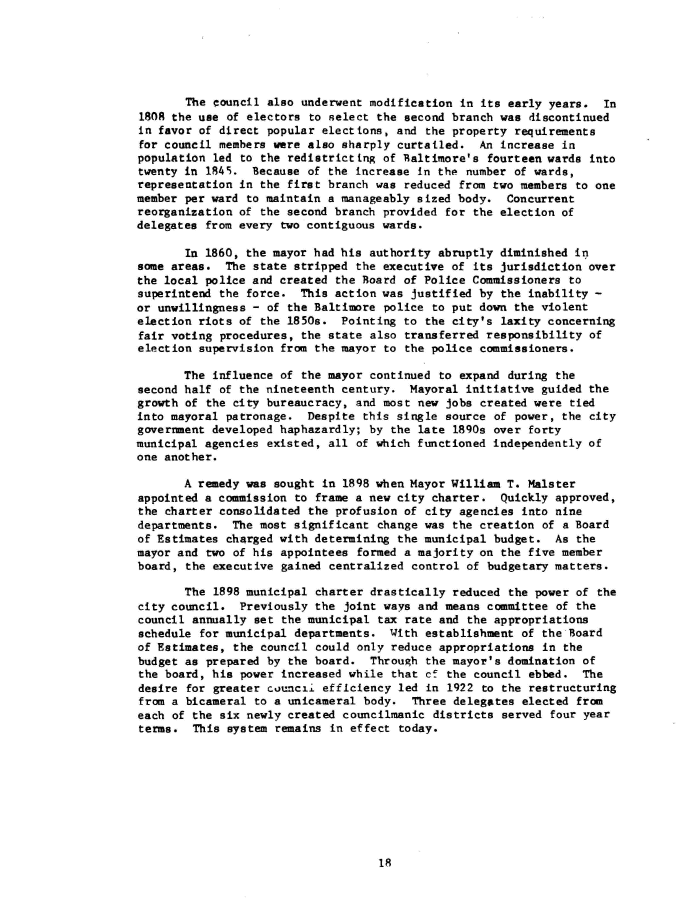|
The council also underwent modification In its early years. In
180fl the use of electors to select the second branch was discontinued
in favor of direct popular elections, and the property requirements
for council members were also sharply curtailed. An increase in
population led to the redlstricting of Baltimore's fourteen wards into
twenty in 1845. Because of the increase in the number of wards,
representation in the first branch was reduced from two members to one
member per ward to maintain a manageably sized body. Concurrent
reorganization of the second branch provided for the election of
delegates from every two contiguous wards.
In 1860, the mayor had his authority abruptly diminished in
some areas. The state stripped the executive of its jurisdiction over
the local police and created the Board of Police Commissioners to
superintend the force. This action was justified by the inability -
or unwillingness - of the Baltimore police to put down the violent
election riots of the 1850s. Pointing to the city's laxity concerning
fair voting procedures, the state also transferred responsibility of
election supervision from the mayor to the police commissioners.
The influence of the mayor continued to expand during the
second half of the nineteenth century. Mayoral initiative guided the
growth of the city bureaucracy, and most new jobs created were tied
into mayoral patronage. Despite this single source of power, the city
government developed haphazardly; by the late 1890s over forty
municipal agencies existed, all of which functioned independently of
one another.
A remedy was sought in 1898 when Mayor William T. Malster
appointed a commission to frame a new city charter. Quickly approved,
the charter consolidated the profusion of city agencies into nine
departments. The most significant change was the creation of a Board
of Estimates charged with determining the municipal budget. As the
mayor and two of his appointees formed a majority on the five member
board, the executive gained centralized control of budgetary matters.
The 1898 municipal charter drastically reduced the power of the
city council. Previously the joint ways and means committee of the
council annually set the municipal tax rate and the appropriations
schedule for municipal departments. With establishment of the Board
of Estimates, the council could only reduce appropriations in the
budget as prepared by the board. Through the mayor's domination of
the board, his power increased while that cf the council ebbed. The
desire for greater council efficiency led in 1922 to the restructuring
from a bicameral to a unicameral body. Three delegates elected from
each of the six newly created councilmanic districts served four year
terms. This system remains in effect today.
18
|

